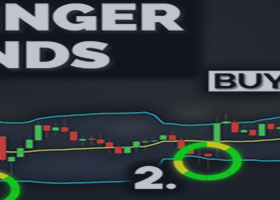Wall Street Warning Signs: Dow Transportation Stocks, Treasuries Fall
3 June 2024, 23:09
0
82
The Dow Jones Transportation Average (.DJT) is down about 5% this year, in stark contrast to the S&P 500's (.SPX) 9% year-to-date gain and the Dow Jones Industrial Average's (.DJI) 1% gain, which topped 40,000 for the first time this month.
While major indexes like the S&P 500, Nasdaq Composite (.IXIC), and Dow have all hit new all-time highs this year, the Dow Transportation Average has yet to surpass its November 2021 record and is currently down about 12% from that level.
Some investors believe that the continued decline in the 20-component transportation index, which includes railroads, airlines, trucking companies and trucking firms, could signal weakness in the economy. It could also prevent further strong gains in the broader market if these companies fail to recover.
Other struggling sectors include small-cap stocks, which some analysts say are more sensitive to economic growth than larger companies. Also in trouble are real estate stocks and some large consumer companies such as Nike (NKE.N), McDonald's (MCD.N) and Starbucks (SBUX.O).
Data this week showed that the U.S. economy grew at an annualized rate of 1.3% in the first quarter, well below the 3.4% growth rate seen in the fourth quarter of 2023. A major test of the strength of the economy and markets will be the release of the monthly U.S. jobs report on June 7.
Among the Dow transportation companies, the biggest year-to-date losers have been car rental company Avis Budget (CAR.O), down 37%, trucking company J.B. Hunt Transport (JBHT.O), down 21%, and airline American Airlines (AAL.O), down 17%.
Package delivery giants UPS (UPS.N) and FedEx (FDX.N) also lost ground, falling 13% and 1%, respectively. Railroads Union Pacific (UNP.N) and Norfolk Southern (NSC.N) are down about 7%. Only four of the 20 transportation components have outperformed the S&P 500 this year.
Stock markets have also been lower this week, with the S&P 500 down more than 2% from its record high hit earlier in May. Rising bond yields have raised concerns about the future performance of stocks.
Not all investors agree that the transportation index accurately reflects the health of the broader economy. The index, like the Dow Industrials, is weighted by price rather than market value and includes just 20 stocks.
Meanwhile, another important group of companies that is also considered an economic indicator — semiconductor makers — are doing much better.
The Philadelphia SE Semiconductor Index (.SOX) is up 20% this year. Investors are pouring in Nvidia and other chip companies that could benefit from growing interest in the business opportunity of artificial intelligence.
The overall market trend remains bullish for Horizon's Carlson, who tracks both the transportation and Dow Industrials to gauge market trends according to "Dow Theory."
The MSCI Global Equity Index rose Friday afternoon as investors reassessed their month-end positions. Meanwhile, the dollar and Treasury yields fell as data showed a modest rise in U.S. inflation in April.
After trading heavily lower for much of the session, the MSCI All Country World Price Index (.MIWD00000PUS) turned positive ahead of the index rebalancing.
When trading ended on Wall Street, the global index was up 0.57% to 785.54 after earlier falling to 776.86.
Before the market opened on Friday, the Commerce Department announced that the personal consumption expenditure (PCE) price index, often seen as the Federal Reserve's preferred inflation gauge, rose 0.3% last month. That was in line with expectations and an increase for March.
Meanwhile, the core PCE index increased 0.2%, compared with 0.3% in March.
The Chicago Purchasing Managers' Index (PMI), which measures manufacturing in the Chicago region, fell to 35.4 from 37.9 in the previous month, well below economists' forecasts of 41.
The MSCI index posted its second straight weekly decline, but still ended the month up.
On Wall Street, the Dow Jones Industrial Average (.DJI) added 574.84 points, or 1.51%, to 38,686.32. The S&P 500 (.SPX) rose 42.03 points, or 0.80%, to 5,277.51, while the Nasdaq Composite (.IXIC) lost 2.06 points, or 0.01%, to 16,735.02.
Earlier, Europe's STOXX 600 (.STOXX) closed up 0.3%. The index is up 2.6% for the month but down 0.5% for the week, its second straight weekly decline.
Data showed eurozone inflation beat expectations in May, although analysts say it's unlikely to stop the European Central Bank from cutting rates next week. However, it could strengthen the case for a pause in July.
The dollar index, which measures the greenback against a basket of currencies including the yen and euro, was down 0.15% at 104.61, its first monthly decline in 2024 since the data was released.
The euro was up 0.16% at $1.0849, while the dollar was up 0.27% at 157.24 against the Japanese yen.
Treasury yields fell amid signs that inflation was stabilizing in April, suggesting a possible Fed rate cut later this year.
The 10-year U.S. Treasury yield was down 5.1 basis points to 4.503% from 4.554% late Thursday, while the 30-year yield was down 3.4 basis points to 4.6511% from 4.685%.
The yield on the two-year note, which typically reflects interest rate expectations, fell 5.2 basis points to 4.8768% from 4.929% late Thursday.
In the energy sector, oil prices fell as traders focused on the upcoming OPEC+ meeting on Sunday to decide on further output cuts.
U.S. crude fell 1.18% to $76.99 a barrel, while Brent crude fell 0.29% to $81.62 a barrel.
Gold also lost ground, falling 0.68% to $2,326.97 an ounce on the day. However, the precious metal still posted its fourth straight monthly gain.


